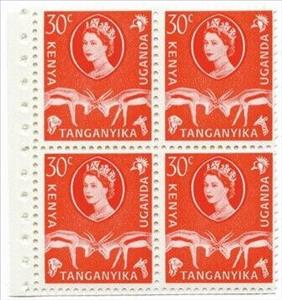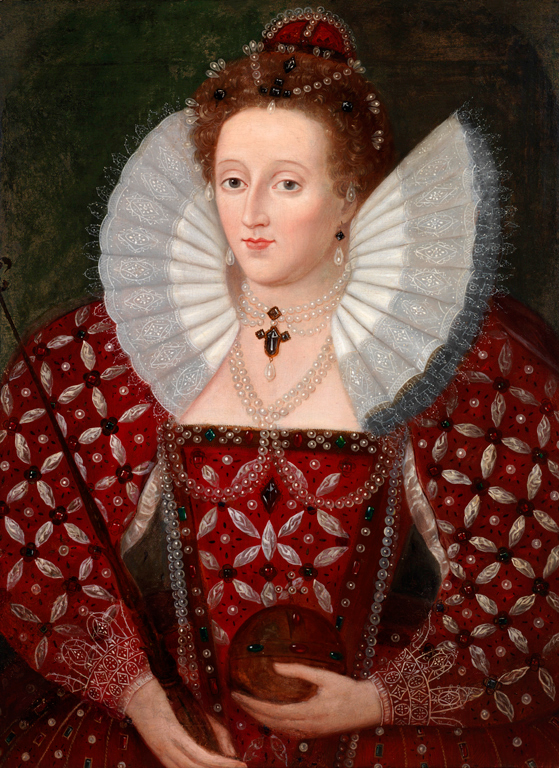Booklet Pane: Thomson's Gazelle (Gazella thomsoni) (British East Africa (Kenya, Uganda and Tanganyika) 1961)
Thomson's Gazelle (Gazella thomsoni) (British East Africa (Kenya, Uganda and Tanganyika) 1961)
01 February (British East Africa (Kenya, Uganda and Tanganyika) ) within release Flora, Fauna & Landscapes goes into circulation Booklet Pane Thomson's Gazelle (Gazella thomsoni) face value 4*30 East African cent
| Booklet Pane Thomson's Gazelle (Gazella thomsoni) in catalogues | |
|---|---|
| Stamp Number: | Sn: EA 125a |
Booklet Pane is square format.
Selvage must be attached to the stamps to ensure origin from booklet pane rather than full pane of stamps.Also in the issue Flora, Fauna & Landscapes:
- Booklet Pane - Coffee bush face value 4*15;
- Booklet Pane - Cotton face value 4*10;
- Booklet Pane - Gnu (Connochaetes sp.) face value 4*20;
- Booklet Pane - Thomson's Gazelle (Gazella thomsoni) face value 4*30;
- Booklet Pane - Zebra (Equus sp.) face value 4*50;
- Booklet - East African Posts and Telecommunications Administration face value 5;
Booklet Pane Thomson's Gazelle (Gazella thomsoni) it reflects the thematic directions:
Animals are multicellular, eukaryotic organisms of the kingdom Animalia (also called Metazoa). All animals are motile, meaning they can move spontaneously and independently, at some point in their lives. Their body plan eventually becomes fixed as they develop, although some undergo a process of metamorphosis later on in their lives. All animals are heterotrophs: they must ingest other organisms or their products for sustenance.
The term antelope refers to numerous extant or recently extinct species of the ruminant artiodactyl family Bovidae that are indigenous to most of Africa, India, the Middle East, Central Asia, and a small area of Eastern Europe. Antelopes do not form a monophyletic group, as some antelopes are more closely related to other bovid groups, like bovines, goats, and sheep, than to other antelopes.
A better definition, also known as the "true antelopes", includes only the genera Gazella, Nanger, Eudorcas, and Antilope. One North American mammal, the pronghorn or "pronghorn antelope", is colloquially referred to as the "American antelope", despite the fact that it belongs to a completely different family (Antilocapridae) than the true Old-World antelopes; pronghorn are the sole extant member of an extinct prehistoric lineage that once included many unique species.
In British heraldry, a coronet is any crown whose bearer is less than sovereign or royal in rank, irrespective of the crown's appearance. In other languages, this distinction is not made, and usually the same word for crown is used irrespective of rank (German: Krone, Dutch: Kroon, Swedish: Krona, French: Couronne, etc.) In this use, the English coronet is a purely technical term for all heraldic images of crowns not used by a sovereign, and implies nothing about the actual shape of the crown depicted. A Coronet is another type of crown, but is reserved for the lower ranks of nobility like Marquesses and Marchionesses, Earls and Countesses, Barons and Baronesses, and some Lords and Ladies. The specific design and attributes of the crown or coronet signifies the hierarchy and ranking of its owner.
A head of state (or chief of state) is the public persona that officially represents the national unity and legitimacy of a sovereign state. In some countries, the head of state is a ceremonial figurehead with limited or no executive power, while in others, the head of state is also the head of government. In countries with parliamentary governments, the head of state is typically a ceremonial figurehead that does not actually guide day-to-day government activities and may not be empowered to exercise any kind of secular political authority (e.g., Queen Elizabeth II as Head of the Commonwealth). In countries where the head of state is also the head of government, the president serves as both a public figurehead and the actual highest ranking political leader who oversees the executive branch (e.g., the President of the United States).
Queen - the title of reigning female monarch or the wife of the king in a number of countries
A Royalty is the immediate family of a king or queen regnant, and sometimes his or her extended family. The term imperial family appropriately describes the family of an emperor or empress, and the term papal family describes the family of a pope, while the terms baronial family, comital family, ducal family, grand ducal family, or princely family are more appropriate to describe the relatives of a reigning baron, count, duke, grand duke, or prince. However, in common parlance members of any family which reigns by hereditary right are often referred to as royalty or "royals." It is also customary in some circles to refer to the extended relations of a deposed monarch and his or her descendants as a royal family. A dynasty is sometimes referred to as "the House of ...". As of July 2013, there are 26 active sovereign monarchies in the world who rule or reign over 43 countries in all
A woman is an adult female human. Before adulthood, a woman is referred to as a girl (a female child or adolescent)







